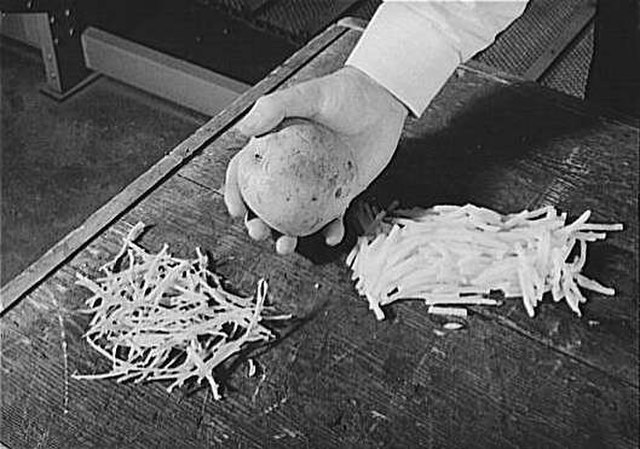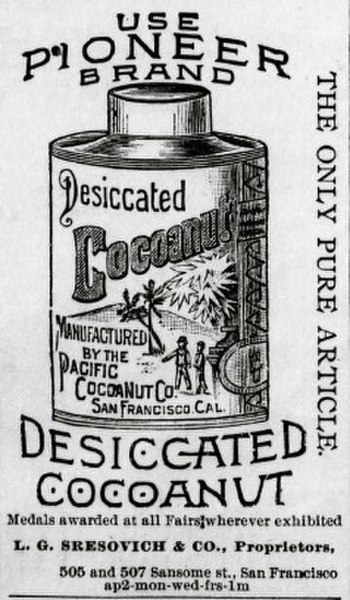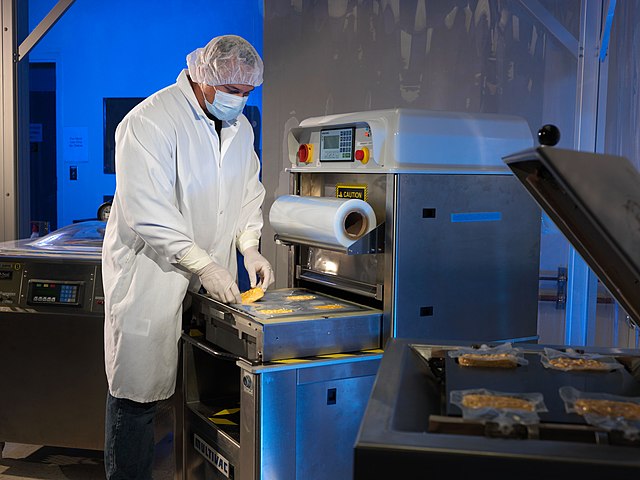Food drying is a method of food preservation in which food is dried. Drying inhibits the growth of bacteria, yeasts, and mold through the removal of water. Dehydration has been used widely for this purpose since ancient times; the earliest known practice is 12,000 B.C. by inhabitants of the modern Middle East and Asia regions. Water is traditionally removed through evaporation by using methods such as air drying, sun drying, smoking or wind drying, although today electric food dehydrators or freeze-drying can be used to speed the drying process and ensure more consistent results.
Flattened fish drying in the sun in Madagascar. Fish are preserved through such traditional methods as drying, smoking and salting.
A whole potato, sliced pieces (right), and dried sliced pieces (left), 1943
1890 newspaper advertisement showing tin of dried coconut
A collection of dried mushrooms
Food preservation includes processes that make food more resistant to microorganism growth and slow the oxidation of fats. This slows down the decomposition and rancidification process. Food preservation may also include processes that inhibit visual deterioration, such as the enzymatic browning reaction in apples after they are cut during food preparation. By preserving food, food waste can be reduced, which is an important way to decrease production costs and increase the efficiency of food systems, improve food security and nutrition and contribute towards environmental sustainability. For instance, it can reduce the environmental impact of food production.
A food scientist is preparing a meal for astronauts in space.
Preserved food
Bag of Prague powder#1, also known as "curing salt" or "pink salt". It is typically a combination of salt and sodium nitrite, with the pink color added to distinguish it from ordinary salt.







